| Overview
In Part I of this series, I introduced the Super Roth IRA¹ an alternative to the Roth IRA and traditional IRA. The Super Roth IRA uses the tax-advantages of permanent life insurance and is a more flexible arrangement than either the traditional IRA or Roth IRA.
This article is designed to outline the path for investors that are not accredited investors or qualified purchasers, i.e. regular folks and gals. The article will outline how to make a traditional life insurance or variable life policy a "lean and mean fighting machine. The result of this planning will make the product very efficient from both an accumulation and cost standpoint.
The Super Roth IRA allows a taxpayer to make after-tax contributions into the plan irrespective of adjusted gross income (AGI) and without limitation to the contribution level. Furthermore, it is not subject to all of the restrictions and limitations of either the traditional or Roth IRAs in regard to minimum distributions and death. Traditional IRA and Qualified Plan Basics
These days, you are lucky to work for a company that sponsors a retirement plan. The days of a company paid retirement plan are long gone unless you work for the federal, state or municipal government. You are lucky if your company even matches the employee's contribution to a 401(k) plan.
The 401(k) allows a participant to defer up to $17,000 of earnings on a pre-tax basis in 2012. A participant that is older than age 50 may contribute an additional $5,500 per year
IRA contributions are the same for traditional and Roth IRAs. The amount of IRA contribution is reduced by the amount of contribution made to a Roth IRA. The IRA allows a taxpayer to contribute $5,000 in 2012 ($6,000 if the taxpayer is age 50 or older) if the taxpayer is a participant in a company sponsored pension plan.
If the taxpayer is a participant in a retirement plan, the taxpayer receives a full deduction on the contribution if adjusted gross income (AGI) on a joint basis is less than $90,000.
The deduction is phased out for AGI between $90,000-$110,000. For a single taxpayer the deduction is phased out between $56,000-$66,000. .
If the participant does not participate in a pension plan at work, the taxpayer is able take a full deduction on the contribution without consideration on the level of adjusted gross income.
The tax rules for traditional IRAs or qualified retirement plan benefits require a taxpayer to begin required minimum distributions by April 1 in the year following the year in which the taxpayer reaches 70 ½. The IRS imposes a 50 percent excise tax on the difference between the required minimum distribution amount and the amount actually withdrawn.
The distributions are taxed as ordinary income rates. Distributions before age 59 ½ are subject to a 10 percent early withdrawal penalty. The account balance is included in the taxpayer's taxable estate. Roth IRA Basics
A taxpayer that files jointly is able to contribute to a Roth IRA if the taxpayer's modified adjusted gross income (AGI) does not exceed $173,000. The contribution phases out between $173,000-183,000.
For a single taxpayer, contributions phase out between $110,000-$125,000. A taxpayer that is married and files separately is unable to make a contribution if modified AGI exceeds $10,000.
The calculation of modified AGI excludes the proceeds from an IRA rollover or qualified plan. This important distinction generally speaking makes it easier for a taxpayer to position himself to do a conversion from a traditional IRA to a Roth IRA.
The primary difference between the Roth IRA and IRA or qualified plan is that the Roth IRA does not have required minimum distributions. Distributions from the Roth IRA are not subject to income taxation. However, the distribution must be a "qualified" distribution. Qualified distributions require five years of "seasoning" within the plan unless the taxpayer is at least age 59 ½.
Distributions before age 59 ½ are subject to the 10 percent early withdrawal penalty as well as normal tax treatment on the distribution (as if it were a traditional IRA). Like the IRA, exceptions to these rules exist for a distribution for a first-time home buyer; distribution to a disabled taxpayer, or a distribution to a beneficiary on account of the taxpayer's death.
The account balance is included in the taxpayer's taxable estate. At death, the remaining distribution of the account is subject to the same rules as the traditional IRA. A surviving spouse as the beneficiary of the Roth IRA can treat the Roth IRA as her own. Other beneficiaries must distribute the balance over their life expectancies.
The investment guidelines for a Roth IRA are similar to the restrictions for a traditional IRA. The policyholder can expand the investment guidelines through the use of a self-directed arrangement. The prohibited transaction guidelines applicable to the traditional IRA apply to the Roth IRA as well as the tax rules on unrelated business taxable income (UBTI) Super Roth IRA BasicsOverview
The Super Roth IRA uses after-tax contributions as premiums into a permanent life insurance policy - whole life, indexed universal life or variable universal life insurance. The policy is structured is a manner to minimize the impact of sales commissions within the policy which reduce the amount of cash value within the policy. It typically takes eight-ten years to overcome the impact of the sales commissions within a permanent life insurance contract. Tax Treatment
Life insurance is a highly tax-advantaged investment vehicle. The cash value within the policy accumulates tax-free within the policy. The policyholder may access the investment gains within the policy on a tax-free basis. Usually, the policyholder accomplishes the tax-free withdrawal by taking a partial surrender of the cash value up to the tax basis in the policy (cumulative premiums). Once the basis has been fully recovered, the policyholder is able to switch to tax free policy loans.
The loan is very low cost and non-recourse to the policyholder. Typically, the "spread" or cost of the loan is .25-.50 (25-50 basis points) per year. The policyholder does not need to make interest or principal payments during his lifetime. The accumulated loan reduces the death benefit at the insured's death.
It is critical that the policyholder retain sufficient assets within the policy to cover policy costs. A policy lapse would be catastrophic for the taxpayer's tax planning. In the event of a lapse, the loans would be treated as amounts received under the policy and subject to taxation at ordinary rates.
Unlike the traditional IRA and Roth IRA, the Super Roth IRA is not subject to contribution limits, earnings caps, or restrictions or conditions on distributions during lifetime or at death. Depending upon the type of policy(ies) chosen as well the insurer, the policyholder has equal or greater investment flexibility than the IRA or Roth IRA. Policy Design Considerations
In order to maximize the Super Roth IRA from an investment standpoint, the taxpayer needs strong and consistent investment performance and cost management. The biggest cost factor within the policy is the sales commission within the policy to the agent.
The typical retail life insurance policy has total first year commissions of 110-120 percent of the policy's target premium (aka commissionable premium. This level of commission is the reason why it takes 8-10 years to recoup these costs within the policy.
The policy should be funded so that the policy is a non-Modified Endowment Contract (MEC). Non-MEC status is important. It preserves the tax-free treatment for policy withdrawals and loans from the policy. The policy design should use the guideline premium test tax law definition of life insurance.
The Super Roth IRA uses "reverse engineering" to fund the policy. First, figure out how much you want to contribute to the policy on an annual basis. You can have some fluctuate, but the taxpayer should select an annual that amount that has a reasonable chance of being consistent. With this information, the life insurer can figure out how much death benefit you need on the policy so that it meets the tax requirements.
Based on the desired premium level, the policy should have the minimum allowable death benefit based on the tax law requirements so that the policy is a non-MEC. Essentially, the policyholder is attempting to force as much premium into a policy with the least amount of death benefit so that the policy is a life insurance policy for tax purposes and a non-MEC.
Virtually every universal life (indexed, traditional or variable) has a policy rider known as a term rider. This rider is non-commissionable within the policy. The policy should be designed to that the policy death benefit is largely covered by this term rider. Generally a carrier will allow a mix of base coverage and this term rider in a ratio of 10-20 percent base coverage and 80-90 percent non-commissionable term rider. The term rider "dials down" the commission level within the policy.
As a result, the premium can be invested within the policy with a much smaller "haircut" providing a larger cash value on Day 1 for investment. The result is more money accumulating from Day 1 on a tax-advantaged basis. The net result is greater accumulation for retirement planning purposes.
Hear my word - your life insurance agent will not make this option available to you! You need to request this. Types of PoliciesWhole Life
From an investment perspective, the policyholder should look at whole life insurance as a long term investment grade bond. The crediting rate or dividend of whole life is tied to the investment performance of the life insurance company's general account assets.
The investment of the general account assets is regulated by state insurance regulators. Generally 85-90 percent of the general account assets are invested in long-term investment grade bonds, mortgages and real estate. The general account has minimal exposure to the stock market but is interest rate sensitive. Variable Universal Life
Variable universal life insurance provides investment access to mutual fund-like sub-accounts managed by the best known mutual fund families (Fidelity, Oppenheimer et al). These assets are segregated from the insurer's general account assets. The policyholder receives a direct pass-through of the fund's investment performance. Most products offer a very large assortment of fund choices (50-60) across a wide segment of investment strategies. If you can't find a fund that you like, you aren't looking hard enough! Indexed Universal Life
Indexed universal life insurance is the new kid on the block. Indexed universal life insurance typically provides a minimal guarantee on the cash value crediting rate. but allows the policyholder to participate in the performance of a broad stock index such as the S&P 500 or Russell 2000. The upside is usually capped in exchange for downside protection when the S&P is less than zero. In essence, the policyholder has downside protection and upside participation in the stock market. Case StudyThe Facts:
John Smith, age 50, is information technology specialist for a Fortune 500 company. He participates in his firm's 401(k) plan that matches up to fifty cents to the dollar up to three percent of his salary of $100,000. His wife also contributes to her company's 401(k) plan. The company does not offer any matching to employee contributions.
John and Mary would like to save an additional $10,000 per year for retirement planning purposes. The Strategy
John is the applicant, owner and beneficiary of a whole life insurance policy insuring his life. The policy issued by Southwestern Mutual. Southwestern Mutual has the highest ratings from the independent rating agencies. In effect, the policy is like a "AAA" corporate bond with tax-free treatment.
The policy has a premium of $10,000 per year and a death benefit of $500,000. This death benefit is the minimum allowable death benefit that will meet the tax law definition of life insurance without violating the MEC guidelines. The fixed annual premium for all base whole life coverage is $10,000 per year.
In the Super Roth IRA, the policy provides for base coverage of $1,000 and $499,000 of term insurance coverage. The combined cost for the death benefit coverage annually is $1,250 per year. The difference of the annual premium and the cost for the death benefit ($10,000 less $1,250=$8,750) is added to the policy as a paid up additions rider. The projected cash value at the end of Year 1 based on the company's dividend scale is $9,000. The projected cash value based on this policy design will exceed cumulative premiums in the second policy year instead of the 9th or 10th policy year had the policy been sold with all base or commissionable coverage.
In Year 15 the policy has a projected cash value of $245,000 and a death benefit of $625,000. John is able to take tax-free withdrawals from the policy without penalty. In the event of death, Mary receives the proceeds income tax-free treatment. Policy distributions have no impact on the taxation of social security benefits. Additionally, in John's state of residence, the policy is not subject to the claims of his personal creditors. Summary
The Super Roth IRA is a more flexible alternative than a traditional IRA or the Roth IRA. One key factor in maximizing the benefit of the Super Roth IRA is to minimize the impact of sales load within the policy. I have outlined some "trade secrets" in order to make the policy more turbo-charged for accumulation purposes.
The combination of tax advantages and institutional pricing allow the Super Roth IRA to provide excellent retirement income and estate planning benefits families. The last installment on the Super Roth IRA will focus on a quantitative analysis between the traditional, Roth and Super Roth IRAs. Stay tuned!
Authors Note: The above article was written by Gerry Nowotny, a tax and estate planning attorney with a JD and LL.M in estate planning from the University of Miami School of Law.
¹Super Roth IRA is a trademark of Reg Wilson of Epic Financial. | 
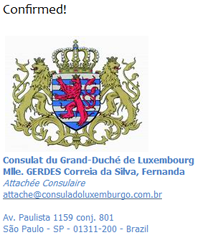 The offshore investment statistics for foreign capital flows into Brazil indicate a dependence on U.S. capital investment, which at this time predominantly comes from the offshore via investment funds registered in Cayman Islands, however the majority of U.S. capital arrives in Brazil through the powerful commodity exchange and stock exchanges. As Paulo Oliveira, CEO of Brain Brazil (see:
The offshore investment statistics for foreign capital flows into Brazil indicate a dependence on U.S. capital investment, which at this time predominantly comes from the offshore via investment funds registered in Cayman Islands, however the majority of U.S. capital arrives in Brazil through the powerful commodity exchange and stock exchanges. As Paulo Oliveira, CEO of Brain Brazil (see: 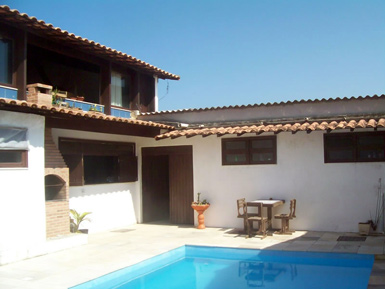
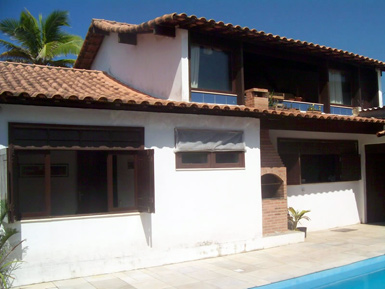
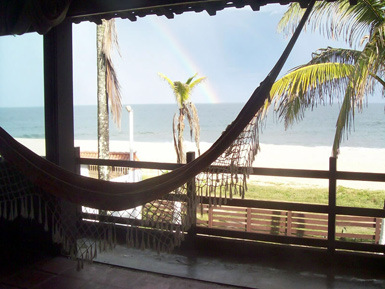

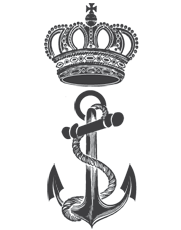



 Home Page
Home Page